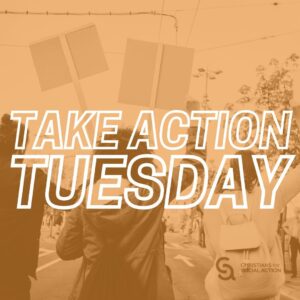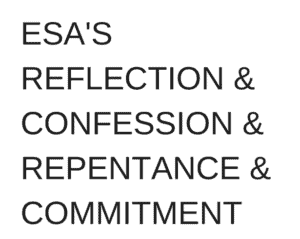Editors Note: This piece is part 2 of our 4-part series on strategic nonviolent direct action. Click here for Part 1.
“If you know the enemy and know yourself, you need not fear the result of a hundred battles.”
– Sun Tzu, The Art of War
“Be wise about what is good. Be innocent of evil.”
Romans 16:19
“Therefore, say to the Israelites: ‘I am the Lord, and I will bring you out from under the yoke of the Egyptians. I will free you from being slaves to them, and I will redeem you with an outstretched arm and with mighty acts of judgment. I will take you as my own people, and I will be your God. Then you will know that I am the Lord your God, who brought you out from under the yoke of the Egyptians. And I will bring you to the land I swore with uplifted hand to give to Abraham, to Isaac and to Jacob. I will give it to you as a possession. I am the Lord.’”
Exodus 6:6-8
You might find it strange to start a piece about nonviolent racial justice actions with some ancient wisdom about military strategy. However, Sun Tzu’s wisdom is wildly popular with nonviolence practitioners. That’s because nonviolence is more than a personal ideal. It’s a method of active confrontation with evil. In fact, one of the most influential contributors to the field of nonviolent direct action is a retired U.S. Army Colonel.
about military strategy. However, Sun Tzu’s wisdom is wildly popular with nonviolence practitioners. That’s because nonviolence is more than a personal ideal. It’s a method of active confrontation with evil. In fact, one of the most influential contributors to the field of nonviolent direct action is a retired U.S. Army Colonel.
The name Robert T. Helvey is just as important in the field of nonviolence as Gandhi or Dr. Martin Luther King, Jr. After stumbling into a Harvard class on nonviolent struggle, taught by the renowned scholar Gene Sharp, Helvey was convinced of the power of nonviolence. He later translated his military wisdom into nonviolent strategies to help freedom movements in the Philippines, Burma, and Serbia.
Helvey is adamant that the first step for taking action is always developing a grand strategy, which begins with creating a vision of tomorrow. He wouldn’t dare proceed to discuss specific, ground-level actions without discussing grand strategy.
Keep reading to discover what grand strategy is, why you need one to make your racial justice actions more powerful, and how you can create one by answering a few simple questions.
What Is Grand Strategy?
In this series, we’re working our way down The Strategy Pyramid – a trusted tool for strategic action planning that actually comes from military strategy. The first level of the pyramid is grand strategy – which is just a fancy way of referring to the big picture of your struggle.
Grand strategy is a high-level idea of how you will use what you have to get what you want while accounting for what obstacles you’ll encounter along the way.
Why You Need a Grand Strategy for Your Racial Justice Actions
Defining a grand strategy for your racial justice actions helps you define a clear picture of your movement’s goals and the actions best suited to achieve those goals. Without a grand strategy, you’re likely to waste precious resources directing ineffective racial justice actions at incorrect targets.
The Ingredients of an Effective Grand Strategy for Racial Justice Actions
A good grand strategy will include some of the following elements:
- Your vision of tomorrow
- Consideration of the “rightness of the cause” [1]
- The role of your movement in achieving that vision
- The values and principles that will guide how you work toward that vision
- An analysis of the conflict situation
- A theory of change
- The method you’ll use to pursue your vision (for example, nonviolent direct action, armed struggle, or putting your head in the sand.)
The grand strategy is “the broadest conception of how an objective is to be attained.”[2] It informs how you will use all the resources you have at your disposal.
Grand strategy can feel highly theoretical, so let’s consider an example: God reverses the grand strategy to liberate the Israelites from Egyptian bondage to Moses in Exodus 6:6-8.
Is there an analysis of the conflict situation?
Yep. In an earlier passage, God says, “I have indeed seen the misery of my people in Egypt. I have heard them crying out because of their slave drivers, and I am concerned about their suffering” (Exodus 3:7). God also knows the primary target of this movement – the king – very well: “But I know that the king of Egypt will not let you go unless a mighty hand compels him” (Exodus 3:19).
Is the cause just?
Yes.
Is there a vision of tomorrow there?
You bet. To free the Israelites from slavery and relocate them to a land where they could be free.
What is the method to be used to realize this vision of tomorrow?
Coercion through divine might. “I will redeem you with an outstretched arm and with mighty acts of judgment.”
The biblical imagination for how YHWH will pursue justice is decidedly not nonviolent. But the grand strategy is evident nonetheless.
The purpose of grand strategy is to help you determine the best courses of action for your group, considering your goals, resources, and obstacles. Once you have the big picture, you can begin to break it down into smaller phases (the topic of the next blog entry in this series), and choose racial justice actions that are well-suited to your goals.
The 5 Questions to Create a Grand Strategy for Your Racial Justice Actions
What do we want?
This question is vital for crafting the cornerstone of your movement: your vision of tomorrow. It’s hard to find a route to an unknown destination. You and your group need to get as clear as possible about what success looks like for you. Think of all the aspects of society that are relevant to your movement. How would they be different if your movement was successful?
Make sure to talk with people in your community – anyone who would be affected by the change you want to pursue. You need to make sure your movement is aligned with the values of the people and that you reflect their values back to them in language that resonates. Ask them: “If you could wave a magic wand over [insert context: our neighborhood, this country, your school] and change it for the better, what would it look like?”
What do we have?
To plan the best courses of action to achieve your vision, you’ll need a realistic assessment of the resources available to you. That way you don’t make plans to struggle for justice in ways that are beyond your capacity. You’d also do well to consider what opportunities exist in your context that you could take advantage of. For example, the Civil Rights movement planned a massive campaign in Birmingham during the 1963 Easter season because they knew it was a peak shopping season. Also, consider who might be potential allies in your struggle in response to this question.
What stands in our way?
You’ll want to think through who your opponents will be, what resources they have at their disposal, and how they might use those resources against you. You’ll want to think through as many scenarios as possible where your group would encounter opposition or challenges, so you can think of ways to avoid or mitigate those challenges or rule out courses of actions that will likely fail.
Don’t forget that there are also impersonal, external challenges to consider. For example, are you about to plan an occupation in a public space in New York in the summer? What will you do when winter comes if your demands haven’t been met?
How is that decision made? Who makes that decision?
Answer this question incorrectly and you’ll waste time, energy, and resources on the wrong target for your actions. Answer this answer correctly, and your knowledge of the target will give you clues as to what types of strategies and tactics are likely to bear fruit. You must understand how a system operates if you plan to change it.
How can we compel them to meet our demands?
When you’ve answered the questions above, you’re ready to begin thinking through general courses of action. At this high level of the strategy pyramid, think in broad terms:
- What kind of pressure do we need to bring to bear on the target (economic, political, social, or something else)?
- What method will we use to bring that kind of pressure? If nonviolent direct action, what role will self-defense play and what will that look like?
- What are the values and principles that will guide the way you work?
Next Steps
Use your answers to the questions above to boil down your grand strategy for your movement to a single paragraph. It’s likely that this process will take many conversations with your community and your action group. That’s normal, and it’s okay. Take your time on this. But once you’ve settled on the grand strategy, it’s important not to pivot from it too easily. Strategic work is iterative and mentally intensive. If you’re constantly pivoting at the conceptual level of strategy, you may never get around to taking action — and the purpose of this work is to clarify your best possible courses of action.
From here, you’ll be ready to break down your grand strategy into smaller objectives and build campaigns to achieve them. We’ll explore campaigns in the next entry of this series. Sign up for our weekly newsletter to make sure you never miss a post.
Works Cited
- Popovic, S., & Miller, M. I. (2015). Blueprint for Revolution: How to Use Rice Pudding, Lego men, and Other Nonviolent Techniques to Galvanize Communities, Overthrow Dictators, or Simply Change the World. New York: Random House.
- Helvey, R. L. (2007). On Strategic Nonviolent Conflict: Thinking About the Fundamentals. Albert Einstein Institute.


